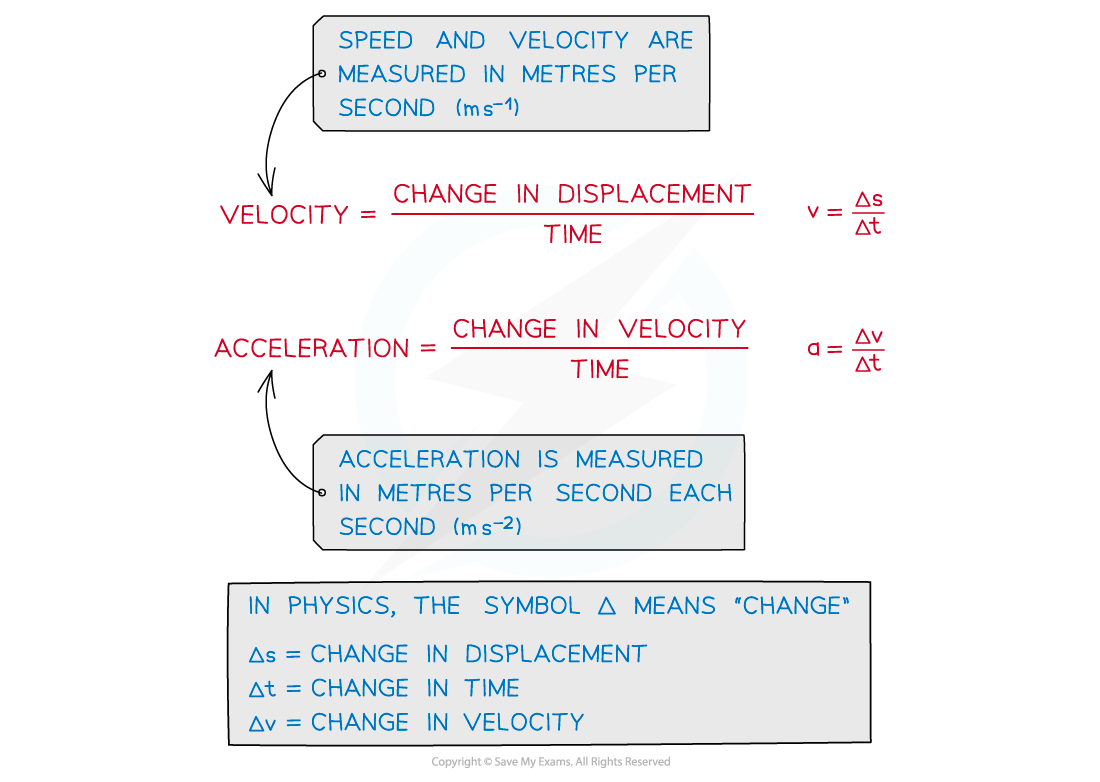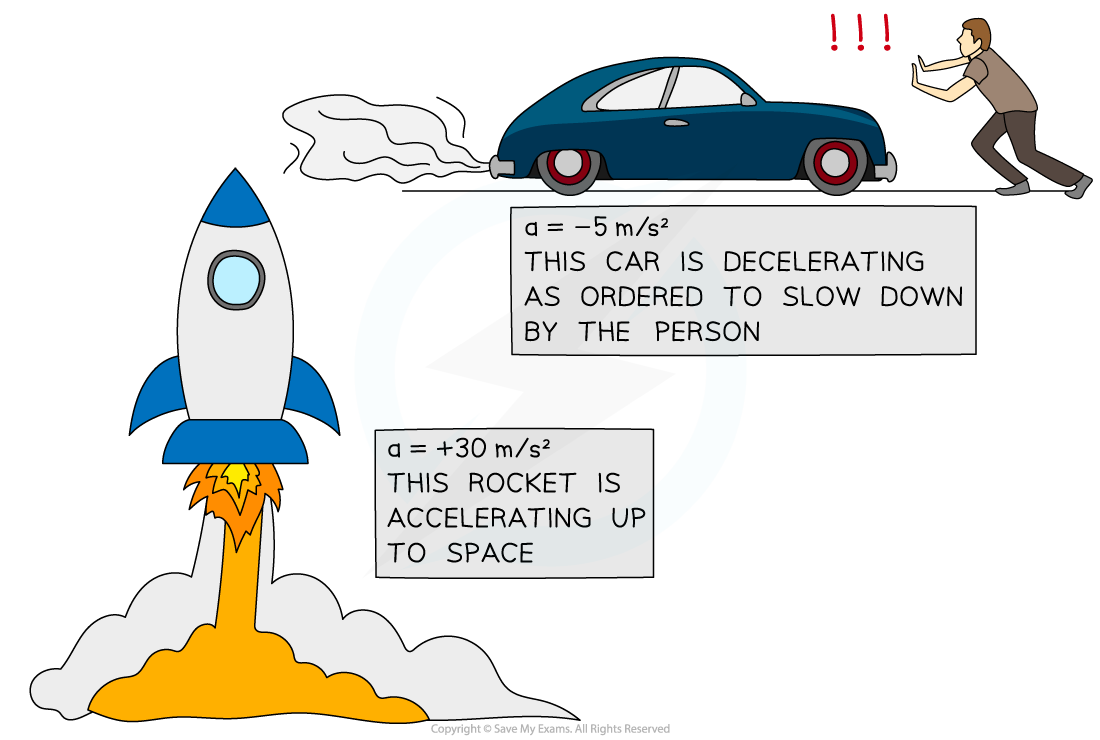Acceleration
- Acceleration is defined as the rate of change of velocity
- In other words, it describes how much an object's velocity changes every second
- The equation below is used to calculate the average acceleration of an object:


- Where:
- a = acceleration in metres per second squared (m s–2)
- Δv = change in velocity in metres per second (m s–1)
- t = time taken in seconds (s)
- The change in velocity is found by the difference between the initial and final velocity, as written below:
change in velocity = final velocity − initial velocity
Equations linking displacement, velocity, and acceleration
Speeding Up and Slowing Down
- An object that speeds up is accelerating
- An object that slows down is decelerating
- The acceleration of an object can be positive or negative, depending on whether the object is speeding up or slowing down
- If an object is speeding up, its acceleration is positive
- If an object is slowing down, its acceleration is negative (sometimes called deceleration)

A rocket speeding up (accelerating) and a car slowing down (decelerating)
Worked Example
A Japanese bullet train decelerates at a constant rate in a straight line.The velocity of the train decreases from 50 m s–1 to 42 m s–1 in 30 seconds.
(a) Calculate the change in velocity of the train.
(b) Calculate the deceleration of the train, and explain how your answer shows the train is slowing down.
Part (a)
Step 1: List the known quantities
- Initial velocity = 50 m s–1
- Final velocity = 42 m s–1
Step 2: Write the relevant equation
change in velocity = final velocity − initial velocity
Step 3: Substitute values for final and initial velocity
change in velocity = 42 − 50 = −8 m s–1
Part (b)
Step 1: List the known quantities
- Change in velocity, Δv = −8 m s–1
- Time taken, t = 30 s
Step 2: Write the relevant equation

Step 3: Substitute the values for change in velocity and time
a = −8 ÷ 30 = −0.27 m s–1
Step 4: Interpret the value for deceleration
- The answer is negative, which indicates the train is slowing down
Exam Tip
Remember the units for acceleration are metres per second squared, m s–2In other words, acceleration measures how much the velocity (in m s–1) changes every second, m s–1 s–1.
